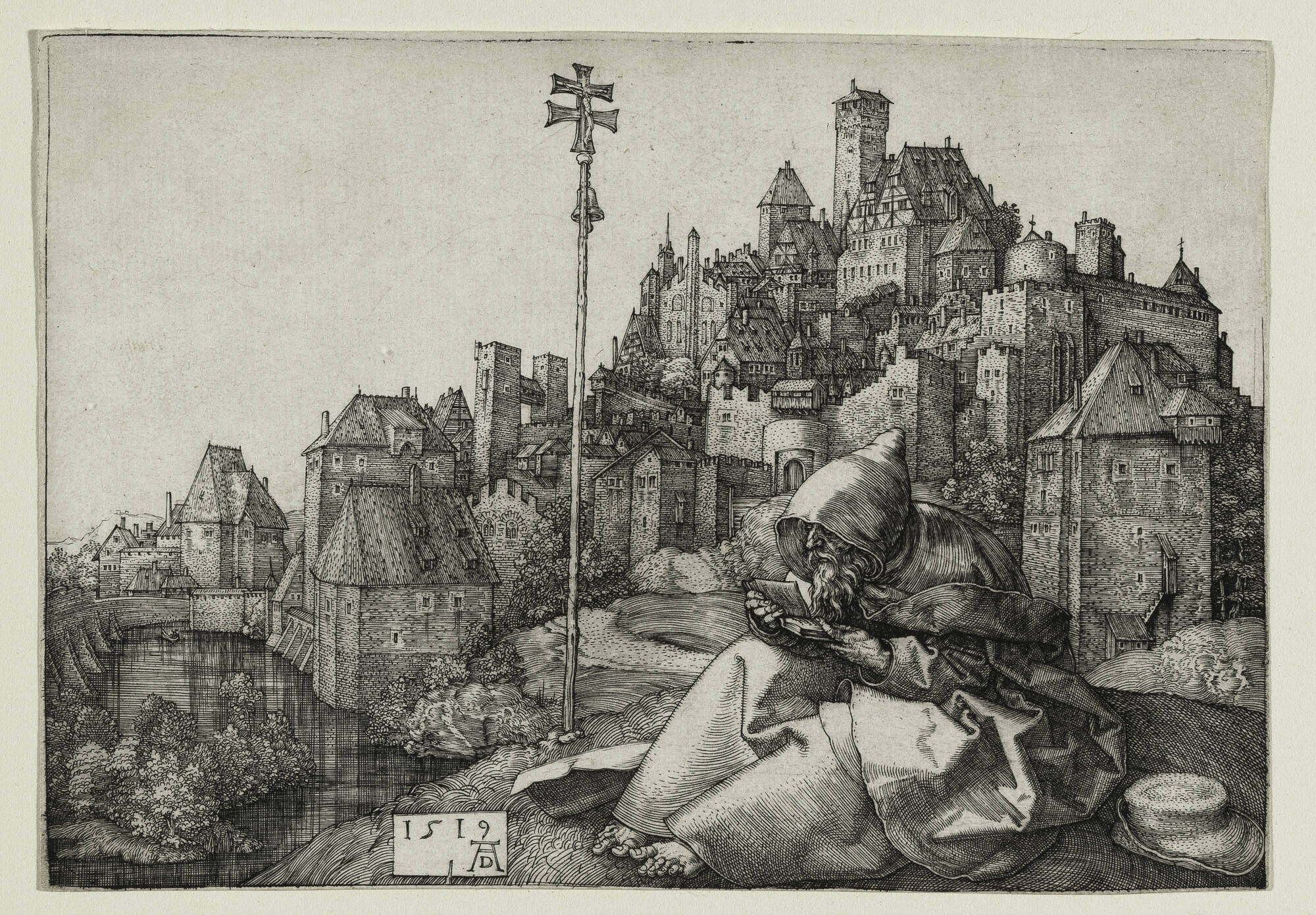
Object Details
Artist
Albrecht Dürer
Date
1519
Medium
Engraving
Dimensions
4 x 5 5/8 inches (10.2 x 14.3 cm)
Credit Line
Bequest of William P. Chapman, Jr., Class of 1895
Object
Number
57.134
Albrecht Dürer is the artist credited with validating printmaking as an art form; his prints are va(…)
Albrecht Dürer is the artist credited with validating printmaking as an art form; his prints are valued for setting a high standard for density of line that has remains unsurpassed. For such a small block, Dürer manages to include remarkable detail: the complex folds in the saint’s garb, the stonework and windows on the distant architecture, and an accurate reflection of these buildings in the river. Saint Anthony is known for his ascetic life in the wilderness, which brought him closer to God. By presenting the saint in front of the city, Dürer emphasizes the importance of introspection and faith over excess and chaos, as represented through the city’s jumbled mix of architecture.
(“Imprint/ In Print,” curated by Nancy E. Green with assistance from Christian Waibel ’17 and presented at the Johnson Museum August 8 – December 20, 2015)
—
The hilltop cluster of buildings with pleasantly alternating angled facades and roofs in St. Anthony Before the City is a pastiche of various cities, including Innsbruck and Du¨rer’s native Nuremberg, that the artist used as the background for a drawing now in Windsor Castle. Du¨rer also included this same fabricated yet realistic city in the background of The Feast of the Rose Garlands, a major panel painting he completed while in Venice in 1506. By 1519, Du¨rer depicted this city yet again (mostly) on its own terms, and in the present engraving it becomes a play of rectangular volumes aligned with Du¨rer’s period of intense interest in geometry. The city achieves greater prominence here than the one in the Virgin by the City Wall, and offers a more nuanced symbolism. It could exemplify the worldly life forsworn by the hermit St. Anthony, or could underscore Anthony’s spirituality by acting as the “city set on the hill” as preached by Martin Luther.
(Andrew C. Weislogel, “Mirror of the City: The Printed View in Italy and Beyond, 1450–1940,” catalogue accompanying an exhibition organized by the Herbert F. Johnson Museum of Art, curated by Andrew C. Weislogel and Stuart M. Blumin, and presented at the Johnson Museum August 11–December 23, 2012)












